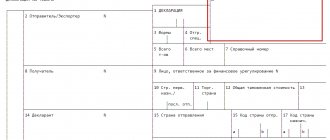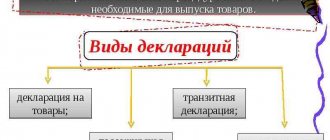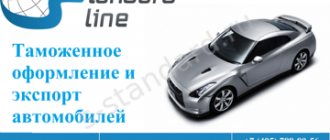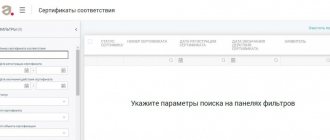- Why do you need to check your car?
- Methods for checking a car at customs
When purchasing a used foreign-made vehicle, be sure to check its customs history. This will ensure that the car was imported into our country legally and is not contraband. Thanks to the AutoHistory service, you can check any car before purchasing to make sure there are no negative factors in its history.
What is a customs clearance check?
All cars imported from abroad must undergo customs clearance. It confirms the fact that the car is legally located in Russia.
If customs clearance is not completed, then the import procedure is smuggling.
All vehicles from abroad undergo inspection. Customs clearance includes inspection of the necessary documents and visual condition of the car.
All violations must be recorded. If the car is used for commercial purposes, then the customs clearance procedure will also be mandatory.
You can pass the test within two months. During this time the machine should not be in operation. All the time it is located on the territory of a temporary warehouse.
After crossing the border you need to:
- Issue a customs receipt and draw up a declaration TD-6.
- Provide a certificate and insurance policy.
- Make copies of securities for the vehicle.
Before doing customs clearance, the citizen pays a fee. Its cost depends on the price of the car, characteristics, type of rate and status of the owner.
Why is it important to check the customs clearance of the car?
Checking the VIN code allows you to find out the full history of a foreign-made car:
- the country from which he was taken;
- customs value;
- mileage;
- date of customs clearance.
Usually the information received is enough to avoid purchasing a smuggled car, because there are many ways to transport a vehicle across the border without customs clearance.
For example, every citizen of the Russian Federation has the right not to clear a car imported from Kazakhstan or Belarus through customs. Such a vehicle is considered a product of the Customs Union and is not subject to taxation when transported across the internal borders of the EurAsEC.
But not all car enthusiasts know that this only applies to cars manufactured before 2010 and equipped with Euro-4 engines. For other foreign cars you will have to pay a state duty, and a considerable one.
The main problems of uncleared cars
According to the law, all cars that entered the territory of the Russian Federation from other states must be registered at customs. If there are no documents or they are fake, the owner of the foreign car will face serious problems. These vehicles can only be used for no more than six months. This period is regulated by temporary import. After this period, criminal and administrative liability begins.
Illegal vehicles cannot be transferred by proxy or sold. If the state If the number is lost or stolen, it will not be restored. In this case, fines are provided. Thus, check at customs is a mandatory procedure.
Customs clearance verification is necessary to ensure the seller’s honesty. After receiving the report, you can obtain information about the origin of the car and find out its estimated value.
What other problems could there be?
- The period of stay in the territory is limited to six months.
- If the license plate is lost, the car is returned to the territory of the country where it was registered.
- Transfer to a third party is prohibited.
- The vehicle cannot be sold.
- If there is no document confirming customs clearance, you need to pay tax. Its amount is equal to the amount of the duty. In addition, the owner will have to pay fines under the Administrative Code.
What is a VIN code
The VIN code refers to a unique 17-digit alphanumeric sequence that is assigned to each car that leaves the factory assembly line. There was no such marking system before 1980, so checking earlier years of cars is a challenge. This code contains basic information for each vehicle, which includes information about:
- Country of manufacture, make, model of car (1-3 characters).
- Equipment and additional options (4-8 characters).
- Year of manufacture of the vehicle (10th digit, each digit is assigned its own year).
- The plant that assembled the car (11th character).
- Serial number of the car assembled at the factory (12-17 characters).
The ninth character is intended to check the correctness of the VIN code, and is calculated using a complex formula for the relationship of the remaining characters. This code eliminates the possibility of passing off one car as another and prevents fraudulent schemes. You can view this alphanumeric sequence on the car body.
How to find out if a car is cleared through customs?
In order to check the car, you need to know the state number of the vehicle, which is indicated on the license plate or VIN code. You can view the VIN code on the nameplate, which is located on the body or chassis.
If the car is Japanese, you will need a body number. After placing an order, the user will receive a large report in which the item “Customs” will be indicated.
What information will still be known?
- Declared value;
- Date of import;
- Country of import.
The results were obtained from the official declaration, which was drawn up when the car was imported into Russia. The information is reliable and accurate.
In addition to information from customs, the Autocode service generates and provides information about cars and owners.
Based on the check, you can find out the characteristics of the machine, as well as:
- Are there any restrictions from the traffic police?
- Was the car involved in an accident?
- The year of manufacture, mileage and engine power are indicated;
- The number of owners is established.
When checking, you need to look at the following points:
- Is a car available for rent?
- Is he listed as stolen or wanted?
- Is it pledged to the bank?
Step-by-step algorithm:
- Open the Customs Union database and enter the VIN code.
- Request information. If the car has passed customs clearance, the data will be displayed.
It is necessary to check the car on other resources for other requests.
By VIN code
A passport verifies a person’s identity by indicating personal information about him. The VIN code provides useful information about the car. The necessary information can be checked on official websites.
Using the VIN code, you can find out the car’s accident registration history, as well as whether the car is wanted . The customs information base contains information about customs clearance of cars.
A VIN check is usually required when purchasing a car. Nobody wants to pay money for a car that might have problems. Before concluding a contract, you need to check if the car has problems with the law. This will help you find out whether customs clearance has been completed and will protect you from misunderstandings on the part of the authorities.
Many scammers do not change the VIN code, so if in doubt, you can conduct an examination. On the Internet it is possible to check a car using the Customs Union database. If you enter the VIN code, then by checking you can find out where the car was registered. However, such information will be displayed if the customs clearance process has been completed completely.
By PTS
The easiest verification method is to check the car's passport. All information must be carefully studied before the transaction.
Is it visible in the document?
- The organization that issued the document. If the car undergoes customs clearance, the customs point must be indicated;
- If the procedure was carried out before 2008, the letter T should appear, and if after, then U.
- The document can be filled out manually, but the forms themselves are compiled exclusively on a computer.
- The PTS must be original, that is, a copy, and duplicates are not allowed.
- The official stamp is displayed in the passport.
- The customs officer also signs.
- The issuing authority is also recorded.
If there are questions that a citizen cannot understand on his own, it is better to entrust the inspection to a specialist. This can be done by a lawyer or attorney. Of course, you will have to pay some amount for the services provided, but this is better than facing problems after the purchase.
PTS check
The easiest way to check whether a car has been cleared by customs and whether the procedure is legal is to carefully study the registration certificate. The PTS must indicate that the document was issued by a customs point, with the exception of vehicles whose import dates back to 1996 or earlier. At this time, documents were issued by the State Traffic Inspectorate. The approximate year of customs clearance is determined by the series of technical passports. The serial number of the document begins with the letter “U” if it was issued by customs authorities after 2008. If the series of the registration certificate begins with “T,” then the car was cleared through customs before this period. The VIN number contains a digit indicating the region code - this is the first digit after the series. This code must correspond to the region where the customs office that processed the car was located.
Particular attention should be paid to the method of filling out the document: the fields at customs are filled out on a special printer for documents, i.e. printed and not by hand. If the seller shows a title marked “duplicate”, then it is better to refuse to purchase such a vehicle. The first page of the technical passport must contain an official seal and the signature of a customs officer. The full name of the point that cleared the car through customs is also required. It is mandatory to register the country of origin (column 16), the type of car (column 17), the state from which the vehicle is imported (column 18), the customs receipt order (column 19), and the serial number of the customs declaration. If the title is in doubt or the seller ignores requests to show the document, then there will likely be problems with the car during registration.
Do I need to pay for a car check?
If the check is carried out on a paid service, then you must pay the specified cost. It depends on the car and the number of positions that will be provided in the report. You can also get services at a reduced cost using a promotional code. There is a possibility of free verification through Customs services. Paid portals provide more detailed information on the car.
What will be in the report?
Customs history allows you to find out whether this vehicle can be used. In addition, the report shows:
- Manufacturer country;
- Mileage;
- Price;
- Environmental class;
- Owner;
- Color;
- Tax.
This check is necessary for all those who buy a car and do not want to encounter fraudulent activities. It’s better to spend time and money checking now than to deal with more serious problems later.
| Did not find an answer to your question? Call a lawyer! Moscow: +7 (499) 755-83-41 St. Petersburg: +7 (812) 917-23-31 |
Buying a car is always a pleasant event for a car enthusiast. Now there are a huge number of foreign-made cars on the market. Not everyone has money for a foreign car. Many people buy a car abroad. After importing the car, it goes through the customs clearance process.
Other online verification options
Every citizen can check for free whether a car has been cleared through customs on the State Traffic Inspectorate website. To do this, you need to go to the “Vehicle Check” tab, enter the VIN code or chassis number into a special window, enter the captcha number and wait a minute to receive information about the vehicle of interest. Along the way, you can find out not only the history of the car, but also check for theft or registration restrictions.
There are paid online services that allow you to check customs clearance of a car using the VIN code or body number:
- net;
- Avtokod.mos.ru;
- Anet.
Unfortunately, the most popular of them, the Autocode service, is available only to residents of Moscow and the Moscow region. Moreover, to obtain information about the car, the user must register on the State Services portal. Typically, authorization takes 1-2 weeks, since a special access code to your personal account is sent by mail in a valuable letter.
Contents and protective elements of a car passport
This document contains all the technical characteristics of car components and other important information that is necessary for accurate identification of the vehicle.
First of all, the compliance of the VIN number indicated in the passport with the data located on the car is checked.
The same 17-digit number must be indicated on the metal frame of the car, under the hood and in other places (the location depends on the car model).
It is also necessary to compare the engine number indicated in the PTS with the actual data (numbers on the motor nameplate).
Compliance with other characteristics specified in the document is checked:
- color, make, model of vehicles;
- engine capacity;
- government number;
- vehicle weight and production date;
- chassis number and other data.
Original vehicle passports are issued by manufacturers or Central Excise Customs (Central Excise Customs), as well as by organizations that converted the vehicle into special equipment. Duplicates of PTS are issued by the State Traffic Safety Inspectorate and have a corresponding entry in the “special notes” column.
Document security levels
Like other important documents, the PTS form has several security elements to ensure there is no risk of forgery:
background ornament – a specific pattern that maintains clear lines when viewed under a magnifying glass or other magnifying device;- watermark – the three-dimensional designation “RUS” is visible in clear light;
- foil hologram – distinguished by clear lines and inscriptions, easy to read (this is the main problem for scammers, since it is almost impossible to fake it);
- three-dimensional design - a relief pattern, shaped like a flower, is located on the back of the document in the upper corner on the left side and can be felt to the touch (changes color depending on the viewing angle: from green to gray and vice versa).
Why check the customs history of a car?
By law, all vehicles entering Russia from other countries must go through customs. Missing or counterfeit customs documents threaten owners of foreign cars with serious problems. Such vehicles can be legally operated for no more than 6 months (under temporary import conditions), after which administrative and criminal liability arises.
Illegal vehicles cannot be sold or transferred by proxy. If the state the number will be stolen or lost and will not be restored. There are fines for breaking the law. This is why it is mandatory to have your car checked at customs.
You should also check the history to make sure the seller is honest. By requesting a report on VIN or state registration. sign, you will receive objective information about the origin, age and estimated value of the foreign car.
Credit cars and used foreign cars
Checking the passports of such cars has its own characteristics. If you need to verify the authenticity of a foreign-made transport document, you should first of all pay attention to who issued it - it is issued only by the Customs Service.
The country of origin must be indicated in the appropriate column. As practice shows, the most problems arise with cars from Belarus and Lithuania - there is a risk that the vehicle is assembled from several parts or restored after an accident.
Fake PTS are more common in used cars, so it is important to carefully check this document and study the “Special notes” field in the duplicate. Also, a “clean” car must have two sets of original keys, a minimum number of owners in the passport.
A duplicate PTS, which was issued after a short period of time after the original was issued, justifiably arouses suspicion. This is especially true for cars from Belarus and Lithuania, and cars whose duplicates were received in a region far removed from the place where the original passport was issued.
Features of buying credit cars
The main problem with such vehicles is that the original of their passport is kept in the bank until the loan is repaid in full. While the debt is being paid, the car owner uses a duplicate.
If you still decide to buy such a car, you should pay attention to:
- date of issue - credit cars of a relatively young age;
- transit numbers;
- mileage - most often it is also small.
Helpful information
In accordance with Order of the Ministry of Internal Affairs of Russia No. 496, registration of vehicle passports according to the procedure introduced in Russia is carried out until July 1, 2021. For similar documents of self-propelled transport, the deadline has been extended until March 15, 2021.
In 2015, the country began the process of introducing an electronic PTS system, and documents issued up to this point can be converted into electronic form only at the request of the car owner. At the same time, simultaneous registration of an electronic and paper vehicle passport is not allowed.
Russian legislation does not provide for fines or other sanctions for the fact of losing a vehicle license or for driving without it. The list of mandatory documents that a driver must provide when checking a vehicle by a traffic police inspector (specified in paragraph 2.1.1 of the traffic rules, approved by order of the Ministry of Internal Affairs of Russia No. 605 of August 7, 2013) does not include a passport.
Where can I check my car?
Checking customs clearance of a car using the VIN code is a simple procedure that allows you to eliminate the risk of purchasing a problematic foreign car.
You can use the service online on the official website of the State Traffic Inspectorate or contact the nearest traffic police department with a written request.
Numerous paid services are also available, however, they mostly duplicate information obtained from official Internet sources.
Checking the VIN code allows you to find out the full history of a foreign-made car:
- the country from which he was taken;
- customs value;
- mileage;
- date of customs clearance.
Usually the information received is enough to avoid purchasing a smuggled car, because there are many ways to transport a vehicle across the border without customs clearance.
For example, every citizen of the Russian Federation has the right not to clear a car imported from Kazakhstan or Belarus through customs. Such a vehicle is considered a product of the Customs Union and is not subject to taxation when transported across the internal borders of the EurAsEC.
But not all car enthusiasts know that this only applies to cars manufactured before 2010 and equipped with Euro-4 engines. For other foreign cars you will have to pay a state duty, and a considerable one.
Since 2014, traffic police officers have been able to check customs documents of drivers driving foreign cars. The absence of a mark on customs clearance of a car is equated to an administrative violation (Article 12.3 of the Code of Administrative Offenses of the Russian Federation), punishable by a fine of 500 rubles and removal of license plates.
If a foreign citizen imported a car into the Russian Federation, and after a year of his stay did not extend the period of temporary import of the vehicle or did not clear it through customs, he will face a similar punishment for the lack of the necessary documents and Russian license plates on the car.
If the act was committed by a group of persons by prior conspiracy and on an especially large scale, the term increases to 5 years, and the fine starts from 300 thousand rubles.
PTS check
Carefully studying the registration certificate is the easiest way to find out whether a car has been cleared through customs. The PTS must be marked accordingly and stamped by the customs service. The exception is for cars imported into the country before 1996.
The year of issue of the registration certificate can be determined by its series:
- letter “U” – after 2008;
- letter "T" - until 2008.
It is imperative that you check the document itself. If the PTS columns are filled in by hand rather than in printed text, or if the first page is marked “duplicate,” it is better to refuse to purchase such a car.
Another way to obtain information about customs clearance of a car is to contact the Federal Customs Service (FCS). Since the beginning of 2007, customs has maintained a database of cars that were imported into Russia and cleared through customs.
Before sending an electronic request, you will need to register and log in to your personal account on the FCS website. Processing of the application may take 1-2 days, after which a response will be sent to the email specified by the user.
As with other specialized services, the car is checked by VIN code or body number.
Every citizen can check for free whether a car has been cleared through customs on the State Traffic Inspectorate website.
To do this, you need to go to the “Vehicle Check” tab, enter the VIN code or chassis number into a special window, enter the captcha number and wait a minute to receive information about the vehicle of interest.
Along the way, you can find out not only the history of the car, but also check for theft or registration restrictions.
After this time, the owner of the car must take it outside the Russian Federation. 3 In addition, during this entire period of time, the foreigner has no right to lend his car to other persons for use.
Therefore, you can buy a car abroad, register it in your home country, and then
In this case, the bank does not give any consent, which means the transaction is considered invalid.
There is no single database on credit cars in the Russian Federation. To find out whether a car is mortgaged, you can use the services of credit institutions. Using the VIN code of the vehicle, their specialists will be able to track whether the car is in collateral, and whether duplicate registration certificates were issued for it or not.
It is best to pay for the purchase after the vehicle has been registered with the traffic police and checked against theft.
After it is deregistered, temporary plates must be placed on the car, and the vehicle passport must contain a note stating that the car was deregistered due to sale. Only after the actions have been completed can the car be sold.
- — power of attorney for the car (if the seller is not the owner, but only has the authority to sell the car).
- - statement.
- — identification card (or a document that can be provided instead) of the person selling the vehicle.
- — passport (or any other type of document that can replace it) of the person buying the car.
- - PTS.
The transaction, as a rule, is completed quickly: in the absence of a queue, literally in 15–20 minutes everything can be completed and documents received. You should carefully monitor the correctness of filling out the documents.
This is especially important when indicating the initials and passport details of both parties to the transaction, information about the car, etc.
Therefore, the buyer wants to check the vehicle for problems with the law, so as not to regret the purchase later.
It is worth noting that attackers do not hesitate to “interrupt” VIN codes.
Therefore, when reviewing it, at the slightest suspicion that the code may have been changed, conduct an examination. Free legal advice: On the Internet it is possible to check a car using the information databases of the Customs Union.
Of course, this is provided that the car had to go through the customs clearance process and passed it.
Purchasing a car is always a joyful event for the car owner and his family members. The market offers a huge selection of vehicles of domestic and foreign production.
And while almost everyone can afford to buy a car from a Russian manufacturer, only a few have enough money for foreign cars. Sky-high prices are associated with the high dollar exchange rate and the considerable cost of customs clearance.
Those who have finally decided to buy a car from a foreign manufacturer are interested in the question of how to find out whether the car has been cleared through customs?
A large number of drivers try to circumvent the laws and go shopping to EU countries, knowing that transport there is much cheaper.
Even high customs duties on imports do not stop them. They are simply not going to pay them, hoping that the police officers will not be interested in this car.
But this opinion is wrong, and, as a rule, car owners face a number of problems:
- Limited period of use of the car on Russian roads under temporary import conditions (only 6 months a year). Next, you need to extend the temporary import at the customs point. In case of loss or absence of any documents, customs officers may require payment of a tax, the amount of which is equal to the state duty. In the end result, the owner will gain nothing from such an acquisition.
- In the event of the theft or loss of a license plate, there is no procedure for restoring it in Russia, since a new one can only be obtained in the country of registration.
- Inability to transfer management to a third party by proxy.
- Sales ban.
- Penalties in accordance with the Code of Administrative Offenses and the Criminal Code of the Russian Federation.
In more detail, all the nuances of using a non-customs cleared car can be found in the article “Cars without customs clearance.”
Below is a fragment of the report for “Customs” for a complete check of a car by VIN number.
Some future car owners try to circumvent the laws and go to the European Union to buy them, knowing that transport there is much cheaper. Even high customs duties on imports do not stop them. They are simply not going to pay them, hoping that the police officers will not be interested in this car. But this opinion is wrong, and, as a rule, such car owners face a number of problems:
- according to the vehicle passport;
- by body number;
- based on the CITTU FCS RF database.
The body of each car is assigned a unique VIN code (body number) at the factory. It consists of seventeen alphanumeric characters. The code does not change during the entire period of operation of the vehicle. The code contains all the important information about the vehicle:
- factory equipment;
- specifications;
- year of issue.
The VIN code must match the documents for sale. The following characters must be identical:
- height and font of letters;
- thickness and width of lines.
Any discrepancy is a reason to send the car for a detailed examination.
You can obtain confirmation of the fact of customs clearance by contacting the Federal Customs Service. This contains information about all vehicles that have undergone the procedure since 1997.
To obtain information, the following algorithm of actions is carried out:
- pay for inspection ($20 cost);
- send by email to the service the Vin code or vehicle passport number;
- receive the verification result by email.
If the car has undergone customs clearance, a letter will be sent to your email containing the following information:
- car model;
- engine capacity;
- details of the import certificate and vehicle passport (number, date of issue);
- customs point that carried out the procedure.








